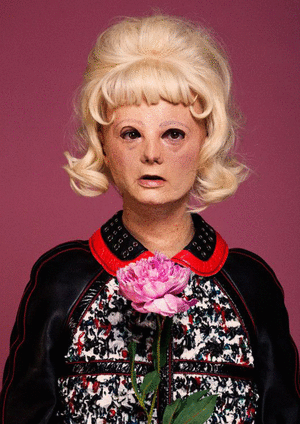The Gallyry (@thegallyry) | Website
February 12, 2020
Just as Sherman and Wearing play with the fluidity of identity, how much of yourself do you portray online?
Throughout our lives we are constantly exploring and transforming our identity. In other words, we are constructing the persona that we want to narrate our own story. By shaping a character, we are able to fit into the reality that we want to be a part of, to feel like we belong to the group we admire, and to project the image of ourselves we would like other people to perceive.
Currently, due to our online-based social interactions and image-based culture, anyone can morph into any character at any time. Consequently, identity has become more fluid than ever. Artists such as Cindy Sherman and Gillian Wearing have already explored this subject at length, by creating artworks that analyse the ways in which individuals present themselves to the world.
Both artists’ work is based on deconstructing the relationship between image and identity, questioning the accuracy of what we see. While Cindy Sherman focuses on the meanings of appearance and the nature of stereotypes, such as the way our looks influence the way people perceive us, Gillian Wearing uncovers people’s intimate characters and explores how our perceived image does not necessarily match with our real character.
On the one hand, Sherman manipulates her own body, staging multiple personas in a series of self-portraits. The American artist assumes different roles according to a narrative – the jaded seductress, the unhappy housewife, the jilted lover, the vulnerable – which take on a life of their own through the viewer’s perception. However, the characters she inhabits are not a reflection of her own self, but a way of mirroring the preconceived meanings associated with socially-defined archetypes. In her iconic self-portrait series, Untitled Film Stills, Sherman deliberately enacted the female roles casted in Hollywood movies as a critic to society’s stereotypical understanding of women. These images call attention to the fact that our identity is partially defined by people’s general understanding of people, according to discernible characteristics.
On the other hand, Wearing examines the duality of people’s identity: the public vs. the private. Through her work, the British artist aims to offer people a platform to freely articulate their stories and experiences, liberating the subjects from social constructions. By either masking their identities to unmask their true selves (as in Confessions: a series of videos of people revealing their most intimate secrets and fears on camera while wearing a mask), or by showcasing the feelings covered behind their pre-stated image (as in Signs: a series of photographs in which the artist asked people from the street to write down what they were really thinking in that moment), her work exposes people’s ‘selves’ beyond their self-projections.
While Sherman’s photographs mimic easily-relatable situations and pop culture references, Wearing’s work reflects on the singularity of individual stories. However, both of their artworks act as a mirror to show the relationship between identity and reality; raising questions on the impact it has on us and allowing the viewer to introspectively see their own reflection.
Nowadays, both artists’ messages have become more relevant than ever. Living in an era where technology has enabled us to digitally create and share our own identity through self-made audiovisual mediums – such as filters that modify our face, apps that digitally enhance our physical flaws, or social platforms that allow us to design our life by posting short videos and pictures – are we able to differentiate ourselves from our staged character anymore?

